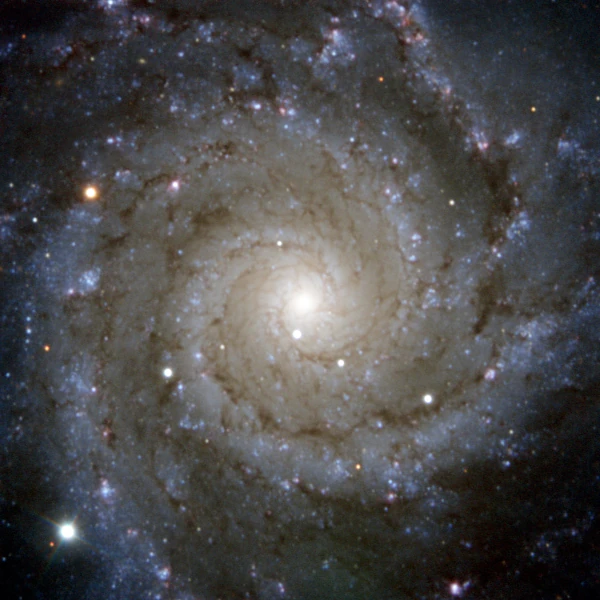
Massive stars (from 8 to 100 solar masses) live a brief but spectacular existence. Unlike stars like the Sun, their destiny is marked by extreme phases: a dazzling blue giant followed by an enormous red supergiant before an explosive end.
| Parameter | Blue Giant | Red Supergiant | Example |
|---|---|---|---|
| Mass (M☉) | 8-40 | 8-40 (initial) | Rigel: 21 M☉ |
| Temperature (K) | 30,000-50,000 | 3,500-4,500 | Betelgeuse: 3,600 K |
| Radius (R☉) | 5-25 | 200-1,500 | UY Scuti: 1,708 R☉ |
| Lifespan | 2-10 million years | 100,000-1 million years | Very brief phase |
| Final Fate | Type II Supernova → Black Hole/Neutron Star | SN 1987A (progenitor: B3 I) | |
Source: NASA ADS, SIMBAD Astronomical Database, and MESA stellar models.
With surface temperatures exceeding 30,000 K and luminosities up to 1 million times that of the Sun, blue giants (types O and B) are the cosmic "sprinters." Their high mass accelerates nuclear reactions via the CNO cycle (Carbon-Nitrogen-Oxygen): \( 4\, ^1H \rightarrow \, ^4He + 2e^+ + 2\nu_e + 3\gamma \quad (\text{Dominated by CNO}) \)
Their lifespan is brief: only a few million years compared to 10 billion for the Sun.
| Star | Constellation | Spectral Type | Mass (\(M_\odot\)) | Radius (\(R_\odot\)) | Luminosity (\(L_\odot\)) | Temperature (K) | Distance (ly) |
|---|---|---|---|---|---|---|---|
| Rigel (β Ori) | Orion | B8 Ia | 18 | 78 | 1.2 × 105 | 11,000 | 860 |
| Alnitak (ζ Ori) | Orion | O9.5 Iab | 33 | 20 | 2.5 × 105 | 29,500 | 1,260 |
| Deneb (α Cyg) | Cygnus | A2 Ia | 19 | 203 | 1.96 × 105 | 8,525 | 2,600 |
| Spica (α Vir) | Virgo | B1 III-IV | 11 | 7.4 | 20,900 | 22,400 | 250 |
Sources: NASA ADS, CDS – SIMBAD, AAVSO
When the core hydrogen is exhausted, the star expands immensely (radius can reach 1,000 times that of the Sun!) while cooling (3,500-4,500 K). Radiation pressure becomes dominant, creating an unstable convective envelope.
| Star | Constellation | Spectral Type | Mass (\(M_\odot\)) | Radius (\(R_\odot\)) | Luminosity (\(L_\odot\)) | Temperature (K) | Distance (ly) |
|---|---|---|---|---|---|---|---|
| Betelgeuse (α Ori) | Orion | M1-2 Ia-ab | 16.5 | 764 | 1.26 × 105 | 3,500 | 642 |
| Antares (α Sco) | Scorpio | M1.5 Iab-Ib | 12.4 | 680 | 75,900 | 3,600 | 554 |
| Mu Cephei | Cepheus | M2 Ia | 19 | 972 | 3.49 × 105 | 3,750 | 2,800 |
| VY Canis Majoris | Canis Major | M3-M4 Ia | 17 | 1,420 | 2.7 × 105 | 3,490 | 3,840 |
Sources: NASA ADS, CDS – SIMBAD, AAVSO
At the end of their lives, these stars stack layers of fused elements (C, O, Ne, Mg, Si...) up to iron (Fe). The iron core, unable to fuse, collapses in a few milliseconds, triggering a Type II supernova: \( E \approx 10^{46}\, \text{J} \quad (\text{Equivalent to the energy emitted by the Sun in 10 billion years!}) \)
| Component | Description | Origin | Example |
|---|---|---|---|
| Compact Residue | Ultra-dense object (neutron star/black hole) | Collapse of the iron core | Pulsar PSR J0348+0432 |
| Remnant | Cloud of gas enriched with metals | Ejection of outer layers | Cygnus Loop Nebula |
| Heavy Elements | Ca, Fe, Au, etc. | Fusion + r-process during supernova | Gold present on Earth |
Source: Chandra Observations (NASA) and Woosley et al. (2002).
N.B.:
In astrophysics, a Stellar Residue refers to the ultimate compact object resulting from the gravitational collapse of the core of a massive star after its supernova explosion. It exists in two main forms: neutron star or black hole, surrounded by a remnant enriched with heavy elements (Ca, Fe, Au...).
Although they represent less than 1% of the stars in a typical galaxy, blue giants and red supergiants exert a colossal influence on the cosmic ecosystem: